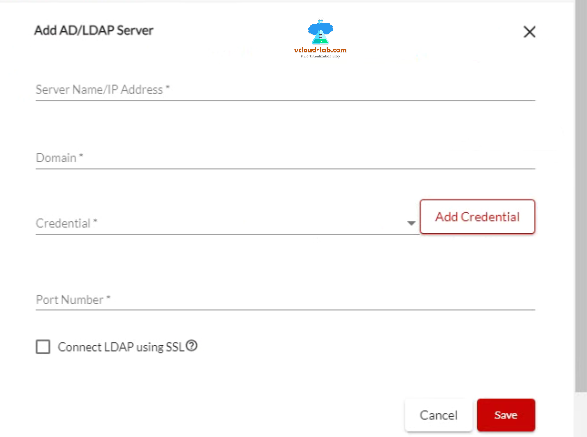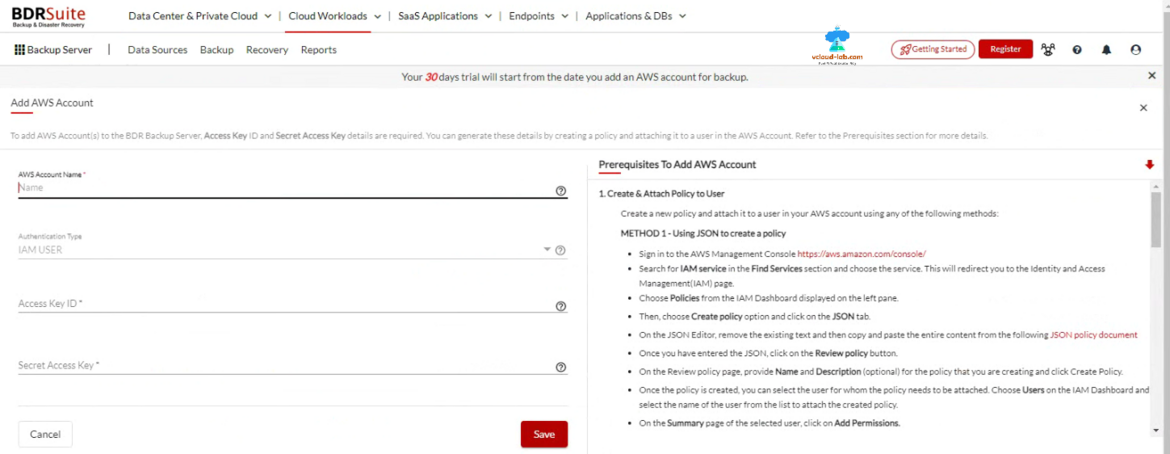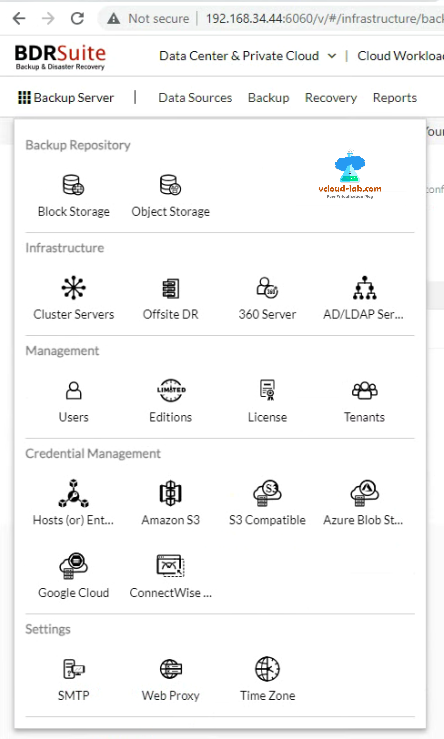We are thrilled to introduce BDRSuite version 7.0.0, now ready for production use. This release represents a significant leap in our commitment to innovation, bringing a host of exciting new features and improvements aimed at enhancing your data protection experience. Notably, this release includes groundbreaking capabilities like KVM and Azure backups, along with enhancements such as support for standalone tape drives and centralized backup for MSSQL and MySQL. These additions expand the scope of what you can achieve with the software, ensuring robust stability while also addressing various bug fixes.
We warmly invite you to access BDRSuite v7.0.0 by simply clicking on the following URL: https://www.bdrsuite.com/vembu-bdr-suite-download/
- Key Highlights of BDRSuite v7.0.0:
- Two-Factor Authentication (2FA)
- KVM Backup and Recovery
- PostgreSQL Backup and Recovery
- Azure Backup and Recovery
- Import Backup Data
- Pre/Post Backup Scripts
- File Level Recovery to Source Machine
- AWS Backup and Recovery
- File Share Backup and Recovery
Noteworthy Improvements in BDRSuite v7.0.0:
- Automated Backup Agent Installation
- Support for Offsite Copy with Backup Jobs using Object Storage Repository targets
- Addition of Folder Path as Backup Repository
- Centralized Backup for SQL Server and MySQL
- Missed Backup Schedule Report
- Compatibility with Standalone Tape Drives
We believe that BDRSuite v7.0.0 will provide you with enhanced capabilities and an even smoother data protection process. Please don't hesitate to download and explore the latest version to take full advantage of these new features and improvements.
Download BDRSuite v7.0.0: You can access the latest version of BDRSuite by visiting Download BDRSuite v7.0.0.
Welcome to the sixth installment of our series on virtualization trends. In this edition, we delve into the intriguing realms of storage virtualization and data protection, topics of paramount importance. We particularly focus on their significance within the context of BDRSuite, a prominent data protection platform, especially in virtualization scenarios.
In this section, we explore the latest and thrilling enhancements in BDRSuite v7 Update and BDRSuite v7, highlighting the significant improvements and innovations they offer to both businesses and organizations. Whether you are an IT expert, a system administrator, or simply have an interest in safeguarding information and data, connect with the BDRSuite team to discover the pioneering developments that establish BDRSuite as an indispensable tool in the contemporary data-centric environment.
In this ever-evolving digital era, companies and enterprises rely on robust backup and disaster recovery solutions to preserve their critical data and ensure uninterrupted operations. BDRSuite is a powerful software suite that offers comprehensive features for data backup and recovery.
One noteworthy feature is the Bare Metal Retrieval directly from VHD within the BDRSuite virtual drive. This functionality empowers administrators to perform Bare Metal Recovery (BMR) using virtual hard disk files (VHD) located in the BDRSuite virtual drive. It simplifies the recovery process by facilitating the restoration of entire system configurations stored as VHDs, providing a comprehensive solution for system recovery scenarios.
Backup gold images (templates) for endpoints and files/folders: Announcing backup job templates that reduce to bare bones backup configuration and management for endpoint and file/folder backups. Administrators can initiate reusable templates with predefined configurations, getting it simpler to harness uniform backup formations among numerous systems or backup jobs.
Combining systems and terminals through AD/LDAP servers: This feature assists BDRSuite to flawlessly incorporate with Microsoft Active Directory (AD) or Lightweight Directory Access Protocol (LDAP) servers. It permits administrators to naturally add systems and endpoints to the backup setup by using presented user backup knowledge and verification.
Unified administration of Mac backups: With this showcase, BDRSuite delivers central backup administration abilities shaped explicitly for Mac machines. It rouses administrators to competently master and expertise Mac endpoint backups commencing a integrated interface, rationalizing the backup method through the organization.
Backup Proxy for VMware on Linux-based BDRSuite Backup Server: This feature presents a backup proxy explicitly proposed for VMware ecosystems contained by the Linux-based BDRSuite Backup Server. The Backup Proxy augments data transmission linking VMware hosts and the backup foundation, developing the productivity and execution of VMware backups.
Multitenant provision for endpoints and file/folder backups: This characteristic boosts BDRSuite's potential to uphold multi-tenant ecosystems, such as those individuals used by controlled service providers (MSPs) or corporations with various subdivisions. It facilitates the partition of endpoint and file/folder backups, supporting secluded backup environments for diverse consumers or services inside the same organisation.
Straightforward backup of Windows system from a Linux-based BDRSuite Backup Server: This feature increases the elasticity of the backup structure by allowing explicit backup of Windows systems from a Linux-based BDRSuite backup server. It reduces the necessity for independent Windows backup servers and serves a farther helpful and incorporated backup solution.
The significant advancements in BDRSuite V7.0.0 include:
Advanced removed objects preservation administration: The administration of removed stuff for SharePoint sites, Group OneDrive, and OneDrive has been improved, warranting accurate execution of data retaining guiding principle.
Microsoft 365 backup improvements: The functionality for Microsoft 365 backup has been enhanced to back hard-erased electronic mail and "lawsuit hold" objects, improving information security and fulfilment expertise.
Backup speed enhancement: SharePoint sites, Group OneDrive, and OneDrive backups have been enhanced to develop backup rapidity and effectiveness.
Higher host/VM backup and recovery: BDRSuite Backup Server at present gives a thorough catalogue of the complete safeguarded hosts/VMs, accelerating capable host/VM-level backup and precise recovery.
End-user self-recovery and login: BDRSuite at the present proposes end-user self-recovery via the Microsoft Outlook plugin add-on, allowing operators to recover their individual data. Moreover, end clients can associate to SaaS product backups to accomplish their data recovery.
On-request incremental backups: Consumers instantly have the tractability to timetable incremental backups for identifiable hosts/VMs and failed hosts/VMs as necessary, letting abundant control over backup management.
Azure environment assortment: Employers be able to directly choose the Azure environment they wish (Azure Default Cloud, Azure US Government Clouds, Azure China) when including Microsoft 365 organizations. This confirms compatibility furthermore accordance with certain Azure environments.
Certificate-based MS Graph API permission: Clients obtain the choice to insert Microsoft 365 organizations utilizing certificate-based MS Graph API approval, killing the requirement used for a classified product key.
BDRSuite at this point establishes the "it starts happening again at the point where it had previously stopped" the quality of being suited to serve a purpose well for Microsoft 365 user mailboxes, consenting interjected backups to be continued from the point of disruption.
Just as we've explored various trends in previous parts of this series, the field of storage has undergone significant transformations over the years. It has evolved in tandem with the growing demands of virtual machines and the need for high-performance workloads. Innovations in this space have been driven by a continuous pursuit of excellence, particularly in areas such as machine learning, artificial intelligence, and data science.
Data Persistence: Some data is ephemeral, like logs and cache, necessitating high-performance storage. In contrast, persistent data, such as databases, must remain accessible regardless of the workload's status.
Performance: Workloads have diverse performance requirements, often linked to storage costs. Cloud providers offer various storage tiers with different price points, ensuring that data is stored optimally.
Capacity: The capacity is a vital consideration in storage solutions. Overprovisioning can result in unused resources, a common issue in hyperconverged infrastructures.
20 Years of Storage Evolution:
The IT landscape has experienced several stages in the storage domain over the past two decades. It began with traditional bare-metal servers and dedicated RAID cards. The evolution then led to shared storage technologies utilizing protocols like iSCSI and FC to present block volumes to multiple servers.
Concurrently, file-sharing protocols like NFS enabled concurrent access at the OS level. Object-based storage introduced a new approach, storing data as components with the aid of storage policies. Technologies such as VMware's VVols enabled granular storage management.
Building on this foundation, virtualized storage or software-defined storage (SDS) disrupted the industry by leveraging local server disks to create shared storage pools across cluster participants. Prominent offerings include VMware's VSAN and Microsoft's Storage Spaces Direct.
Importance of Staying Informed:
Given these rapid evolutions, it is vital for organizations to stay updated in this space. Upgrading to the latest technology is not always necessary unless it addresses existing or future challenges. Business needs drive the adoption of modern storage solutions. Therefore, IT departments must provide expertise and informed recommendations to align with business requirements.
Object Storage and Data Management: Object storage systems manage data as discrete units, providing scalability, cost-effectiveness, and flexibility. They are particularly beneficial for unstructured data and offer durability and accessibility.
Emerging Trends in Storage Management:
Modern workloads demand enhanced performance, flexibility, mobility, and capacity. Several emerging trends are shaping the storage landscape:
Transition to Full Flash Storage: The affordability of SSD devices has driven organizations to adopt full-flash storage solutions to ensure future-proof hardware and meet performance requirements.
Edge Storage for IoT, 5G, and AI: Edge storage involves processing data locally at the network's edge, reducing latency and costs. It's particularly relevant for IoT, 5G, and AI applications. Solutions include VMware Edge Compute Stack, NVIDIA EGX Platform, and AWS Greengrass.
Hyperconverged Infrastructure (HCI): HCI combines computing and storage resources within each host in a cluster, offering flexibility, redundancy, and simplicity. Examples include VMware VSAN and Microsoft's Storage Spaces Direct.
Hybrid Cloud Storage Solutions: Businesses and organizations are increasingly adopting hybrid cloud storage solutions, combining the advantages of public cloud and on-premises data center environments. Notable solutions include AWS Storage Gateway, Microsoft Azure Stack, and Google Cloud Storage.
Few Noteworthy Features
File Level Recovery to Source Machine: Enhance the data recovery process by aiding the direct restoration of files and folders to the source machine, rationalizing the overall progression.
AWS Backup and Recovery: Knowledge the closeness of agentless backups, incremental backups, and customizable backup policies for your AWS infrastructure with BDRSuite. This feature not only permits you to create snapshots but also provides the flexibility to select the storage location for your Amazon EC2 instance backups.
Azure Backup and Recovery: With reinforce for agentless backup of Azure virtual machines utilizing Azure Native APIs, BDRSuite offers incremental backup capabilities. This allows you to choose to store backups either locally or in diverse malleable cloud storage solutions, including Azure Blob, AWS S3, Google Cloud, and S3 Friendly storages.
Pre/Post Backup Scripts: BDRSuite now encourages users to automate tasks before and after backup tasks through pre and post backup scripts for VM, Disk Image, and file-level backups.
Import Backup Data: Streamline the procedure of importing backups to a new backup server, particularly during challenging situations such as backup server failures or migrating backups from another server. Even if a backup job has been deleted, you can retrieve the backup data from the backup repository.
File Share Backup and Recovery: BDRSuite now lets you to back up file shares accommodated on NAS devices, Windows, and Linux machines. Automate the backup method with flexible scheduling preferences, preserve backup data, and restore files and folders as needed.
KVM Backup and Recovery: BDRSuite has impeccably incorporated with the KVM Hypervisor, allowing agentless backup for KVM virtual machines. This incorporation offers all-round recovery options, allowing you to regain control over the rebuilding of your critical virtual machines, whether it's the entire machine, specific file levels, or more.
PostgreSQL Backup and Recovery: BDRSuite now presents its backup facilities to PostgreSQL databases, proposing application-level backups, customizable backup policies, incremental backups, and capable data protection for your PostgreSQL databases.
Two-Factor Authentication (2FA): Augment the security of your BDRSuite Servers by applying Two-Factor Authentication (2FA). This security feature safeguards that only authorized individuals can entry the BDRSuite Backup Server web console and supervise critical backup jobs.
In Conclusion:
Storage technologies have seen remarkable advancements over the last two decades, leading to faster, more efficient, and scalable solutions. The future promises disruptive technologies like NVMe, Intel Optane, and machine learning-driven storage management. Staying informed and prepared for these changes is crucial for organizations and IT professionals to make the most of these efficient storage solutions for specific use cases.






